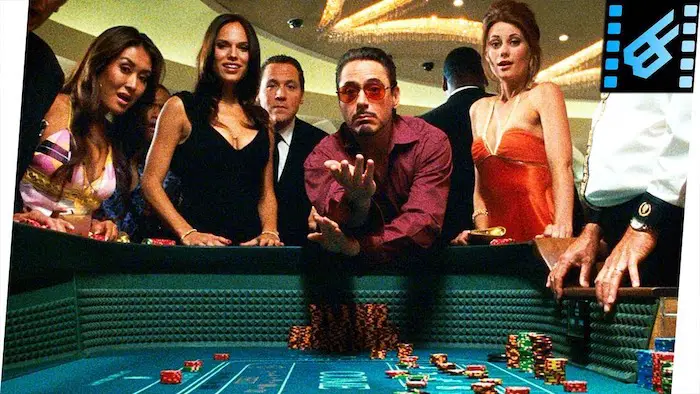The connection between cinema and gambling has always mirrored the societal attitudes and technological advancements of their times. From the early days of film, gambling scenes have served as pivotal plot devices, character builders, or background settings that offer viewers a glimpse into the technicalities of the gambling world. The evolution of cinema, from silent films to the digital age, has seen gambling depicted in different ways, reflecting the changes in both the art of filmmaking and societal perceptions of gambling.
The Dawn of Cinema and Technological Breakthroughs
The inception of motion pictures can be traced back to the 1830s with inventions like the Phenakistoscope and the Zoetrope. These early devices, which created the illusion of movement through a series of rotating images, laid the groundwork for what would eventually become cinema. However, it wasn’t until George Eastman created the first celluloid roll film in 1885 that the foundation for modern film was truly laid. This innovation allowed Thomas Edison and his assistant, William Dickson, to invent the first camera capable of recording movement, marking a monumental leap in storytelling capabilities.
The silent era, which began with the invention of the Cinématographe by the Lumière Brothers in 1895, introduced audiences to the narrative power of film. This era was characterized by black and white imagery, lack of sound, and, importantly, experimentation with themes, including early depictions of gambling. These silent films, relying solely on visuals to tell their stories, often used gambling scenes to convey tension, risk, and the high stakes of character decisions without a single word.
As cinema transitioned into the era of sound with “The Talkies”, the inclusion of dialogue and auditory elements added new dimensions to the depiction of gambling. The first significant film to introduce sound, “The Jazz Singer” in 1927, not only revolutionized cinema but also set the stage for more complex and nuanced portrayals of gambling and its impact on characters’ lives.

The Birth of Hollywood and the Rise of Gambling Cinema
The establishment of Hollywood as the heart of the film industry was another milestone that significantly impacted the portrayal of gambling in cinema. With American filmmakers moving to Los Angeles in the early 1910s, the constant sunshine and varied landscape offered ideal filming conditions, leading to the birth of the studio system. This period saw an explosion in film production, with studios experimenting with different genres and themes, including gambling.
The proliferation of gambling-themed films during this era can be attributed to the fascination with the concept of chance, risk, and the American Dream. As films began exploring the darker sides of society and human nature, gambling scenes became a metaphor for the unpredictability of life.
Moreover, the evolution of film technology during this period, from improvements in camera design to the introduction of sound, enabled filmmakers to create more engaging and immersive gambling scenes. Audiences were not just watching a game of poker or roulette; they were being drawn into the tension and adrenaline.
Just as film technology has advanced from silent black and white images to vibrant, sound-filled scenes, so too has gambling moved from the tactile experience of cards and chips to digital online slots. This transition represents not only technological progress but also a shift in how people engage with gambling as a form of entertainment.
As cinema continues to evolve, its portrayal of gambling remains a fascinating reflection of societal changes and technological advancements. From the early days of the Phenakishoscope to the digital age, the journey of gambling in cinema is a testament to the medium’s enduring power to captivate, entertain, and reflect the human condition.
The evolution of cinema during its golden age, particularly through the lens of film noir and the vibrant hues of Technicolor, has significantly influenced the portrayal of gambling, embedding it deeply into the fabric of cinematic storytelling. This era marked a transition in how gambling was visualized and understood, reflecting broader shifts in society and technology.
The Noir Influence: Gambling in the Shadows
Film noir, a genre that flourished in the 1940s and 1950s, is renowned for its dark, cynical, and morally ambiguous world, where the lines between right and wrong are often blurred. Within this shadowy environment, gambling became a powerful narrative, used to reveal characters’ flaws, desires, and desperations. The genre’s stark, high-contrast lighting and moody atmospheres lent themselves perfectly to the tension and uncertainty inherent in gambling scenes. These elements combined to create a visceral sense of risk that mirrored the existential uncertainties of post-war society.
Gambling in film noir not only served as a backdrop but was often integral to the plot, illustrating the journey of its protagonists. Classic noir films frequently depicted smoky backrooms and clandestine casinos where fate could turn on the roll of a dice or the turn of a card. These scenes emphasized the precariousness of life, showcasing characters who were willing to risk a chance outcome, mirroring the larger societal gamble of a world recovering from war and on the brink of profound change.
The Technicolor Revolution: Gambling in Vivid Color
The introduction of Technicolor to cinema in the 1930s revolutionized the depiction of gambling scenes, transforming them from monochrome shadows into explosions of color. This technological advancement allowed filmmakers to present gambling in a more glamorous, enticing light, aligning with the era’s growing fascination with Las Vegas and the casino lifestyle. The vibrancy of Technicolor brought a new level to the visual storytelling of gambling.
Technicolor films of this period often portrayed gambling as a lavish, escapist fantasy, a world away from the gritty realism of film noir. This shift reflected changing attitudes towards gambling, from a dangerous, morally ambiguous activity to a glamorous, mainstream form of entertainment. The use of color emphasized the appeal of the gambling world, with its bright lights, dazzling costumes, and the promise of wealth and excitement. It painted gambling as an integral part of the dream factory that Hollywood represented, offering audiences a glimpse into a world of luxury and fame.
The Influence of Genres and Technology on Gambling Cinema
The dual influences of film noir and Technicolor illustrate how cinema was shaped by technological innovations and genre conventions. Film noir’s exploration of the darker sides of gambling—its capacity for ruin and redemption—contrasted sharply with Technicolor’s more celebratory and glamorous portrayal. Together, they offer a multifaceted view of gambling in cinema, reflecting the evolving attitudes toward this timeless human pursuit.
As cinema progressed, the depiction of gambling evolved from a simple vice or virtue into a nuanced symbol of human aspiration, fear, and desire. The technological advancements in film, from the gritty realism of noir to the spectacle of Technicolor, have allowed filmmakers to explore these themes in increasingly sophisticated ways.
The Digital Age: A New Era for Gambling in Cinema
The coming of the digital age has transformed cinema in profound ways, from the methods used to create films to how audiences consume them. This transformation has also impacted the depiction of gambling, offering filmmakers new tools to enhance storytelling and engage viewers.
CGI and VFX: Bringing the Casino to Life
Computer-generated imagery (CGI) and visual effects (VFX) have opened up endless possibilities for filmmakers, allowing for the creation of vivid, immersive gambling scenes that were previously impossible to achieve. These technologies enable the visualization of fantastical, high-stakes gambling environments, from futuristic casinos to intricate game designs, adding a new layer of dynamic to the gambling narrative. The realism and detail that CGI and VFX allow mean that the tension, drama, and spectacle of gambling scenes are heightened, drawing viewers deeper into the cinematic experience.
Digital Filmmaking and the Portrayal of Online Gambling
Digital filmmaking has not only changed how movies are made but also how they depict modern forms of gambling, such as online slots. The transition to online gambling platforms has been mirrored in cinema, with more films exploring the implications of this digital shift. This reflects broader societal concerns about technology, gaming, and the nature of gambling in the digital era.

FAQs
How did early cinema depict gambling scenes? Early cinema, particularly during the silent era, used gambling scenes to convey tension and risk, relying on visual storytelling to depict the stakes involved. These scenes often served as critical plot devices or moments of character development.
What impact did the introduction of sound have on gambling-themed films? The introduction of sound in films allowed for more complex storytelling and character development within gambling-themed films. It enabled filmmakers to incorporate dialogue, enhancing the emotional depth and realism of gambling scenes.
How has digital technology changed the portrayal of gambling in recent films? Digital technology, especially CGI and VFX, has transformed the portrayal of gambling by creating more immersive and visually stunning scenes. It has also facilitated the exploration of online gambling, reflecting its growing prevalence in society.
Has the portrayal of gambling in cinema influenced societal attitudes towards gambling? The portrayal of gambling in cinema has both reflected and influenced societal attitudes towards gambling. While early films often depicted gambling as a cautionary tale, the glamourization of casino culture in later films has contributed to a more nuanced, sometimes celebratory, view of gambling.
The journey through the history and evolution of gambling in cinema showcases the medium’s power to reflect and shape societal attitudes toward gambling. From the earliest days of film to the digital age, the portrayal of gambling has evolved, mirroring technological advancements and the shifting sands of societal norms. As we look to the future, it’s clear that cinema will continue to explore the complex, multifaceted world of gambling, offering audiences new insights and perspectives on this age-old human activity.
